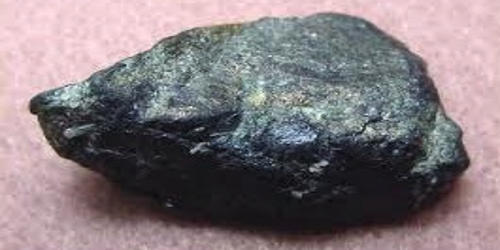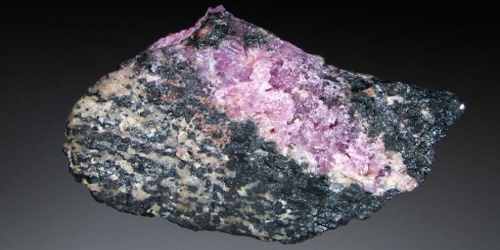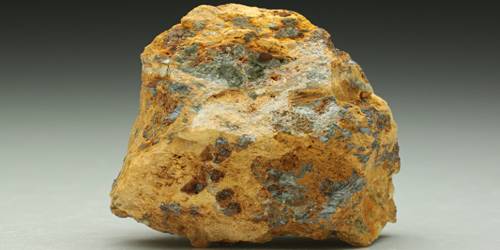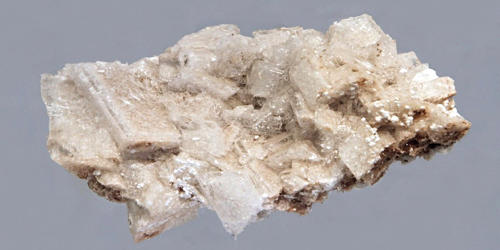Mawsonite is a brownish-orange sulfosalt mineral, containing copper, iron, tin, and sulfur: Cu6Fe2SnS8. It is a tetragonal sulphide of copper, tin, and iron, which is typically found as small, brownish-orange inclusions in bornite. It is Not Radioactive.
It was first described in 1965 for occurrences in the Royal George mine, Swinton, Tingha, Hardinge County, New South Wales; and the North Lyell mine, Mount Lyell Mine, Queenstown, Tasmania.
General Information
- Category: Sulfosalt minerals
- Formula: (repeating unit) Cu6Fe2SnS8
- Crystal system: Tetragonal
- Crystal class: Scalenohedral (42m)
- Color: Brownish orange.
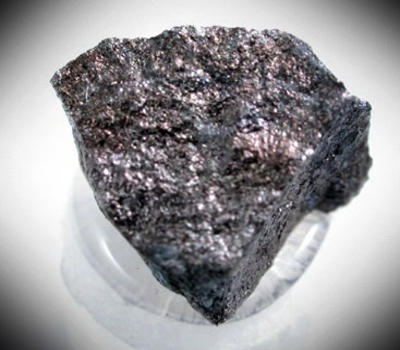
Properties
It is a tetragonal-scalenohedral brownish-orange mineral containing copper, iron, sulfur, and tin. Synthetic copper sulfides have emerged as promising non-toxic and low-cost materials for thermoelectric power generation in low-grade waste heat recovery systems.
- Crystal habit: Exsolution grains within bornite
- Mohs scale hardness: 3.5-4
- Luster: Metallic
- Diaphaneity: Opaque
- Specific gravity: 4.65 (calculated)
- Pleochroism: Strong
- Density: 4.65 g/cm3 (Calculated)
- Magnetism: Magnetic.
Occurrence – In massive to disseminated hydrothermal copper ores within highly altered volcanic rocks; in skarns; disseminated in altered granites; rare in copper porphyry deposits.
It was named after Australian geologist and Antarctic explorer, Sir Douglas Mawson (1882–1958). It occurs within hydrothermal copper deposits in altered volcanic rocks. It also occurs in skarn deposits and as disseminations in altered granites.
Association: It occurs in association with bornite, pyrite, chalcopyrite, chalcocite, digenite, idaite, stannite, stannoidite, pyrrhotite, pentlandite, tennantite, enargite, luzonite–famatinite, kiddcreekite, mohite, native bismuth, galena, and sphalerite.
Information Source:
